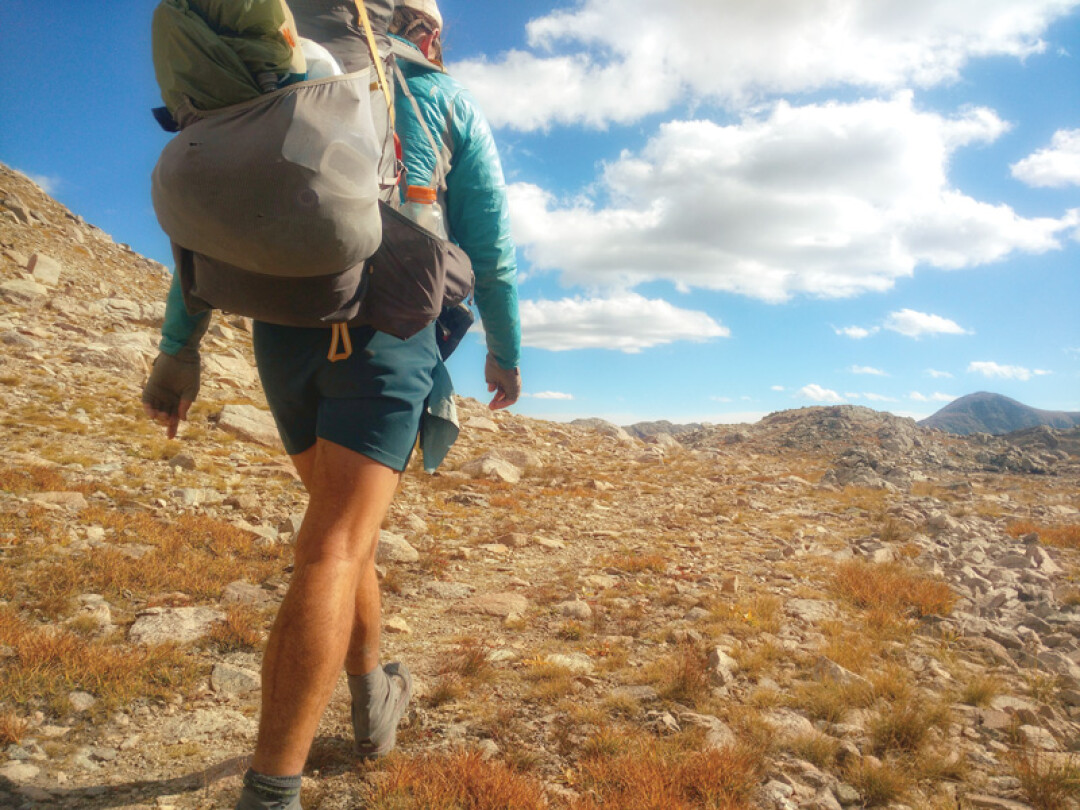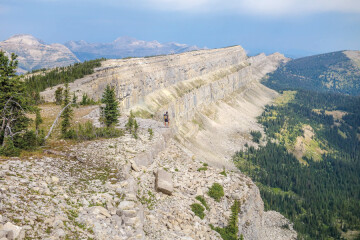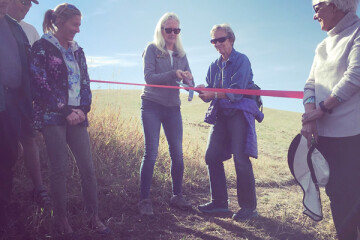Blazing the National Trails System

On October 2, 2018, America celebrates the 50th anniversary of the National Trails System Act. With the passage of the National Trails System Act in 1968, America was given a gift – the creation and protection of some of America’s most iconic places. Today there are 19 National Historic Trails, 11 National Scenic Trails, more than 1,200 National Recreation Trails, and more than 2,000 rail-trails. The National Trails System touches all 50 states and Puerto Rico, crossing rural, suburban, and urban communities. Millions of people enjoy the trails for recreation, physical activity, historical studies, and active transportation each year.
One of the most famous trails in the National Trails System, the Continental Divide National Scenic Trail (CDT) runs 3,100 miles from Mexico to Canada. As it winds its way along the spine of the Rocky Mountains through New Mexico, Colorado, Wyoming, Idaho, and Montana, the CDT passes through alpine meadows, desert canyons, quaking aspen forests, and imposing mountain ranges, making for a truly beautiful journey through some of America’s most dramatic and rugged terrain. Designated by Congress in 1978, the CDT is the highest, most challenging and most remote of the 11 National Scenic Trails.
This year, the non-profit Continental Divide Trail Coalition partnered with the U.S. Forest Service, Bureau of Land Management, youth conservation corps, and volunteers from across the country to mark the entire length of the CDT for the first time in its history – making the Trail easier to find and follow. “We couldn’t think of a better way to celebrate this important anniversary than by bringing people together to make the CDT more accessible to the American public,” said Brenda Yankoviak, U.S. Forest Service Administrator for the CDT.
For five decades, the National Trails System Act has preserved and protected the trails that lead people into new worlds on foot, by bike, and on horseback. The trails showcase routes as ancient as the Ice Age and as recent as the Selma to Montgomery March. Trails can take you into the deep backcountry or through the center of Washington, D.C.
---
I yanked the map out of my partner’s hands and laid the compass alongside it; matching up the topo lines with the ridgelines around us. I turned to face the steep, loose slope covered in scrubby trees and bushes that we’d just half slid, half fallen down.
“That,” I pointed at where we’d just been, “was the Divide.”
He peered over my shoulder and nodded. Irritated and frustrated, we bushwhacked back up the slope to the open ridgeline above and continued cross-country along the correct bisecting ridge. It was July 2006 and we were in Montana attempting to hike the Continental Divide Trail from the Canadian border to the Mexican border. Over and over in the few weeks we’d been on “trail” we’d learned that this trip would be nothing like the Pacific Crest or Appalachian Trails that we’d already hiked. Constant attention to our maps and the descriptions in our guidebook were necessary. And, even though we were nearly continuously double checking, we still managed to make wrong turns and get off route almost daily.
There were almost no trail markings along the CDT in 2006. I think we saw our first one near Lincoln, MT. More than that, there was also a lack of trail tread in many areas. We simply followed our compass, animal trails, 4WD tracks, or open ridgelines. We celebrated when we arrived in Colorado and merged with the well-traveled and well-marked Colorado Trail. I cried when we had to depart from it and return to our adventurous navigation.
11 years later, I hiked the CDT southbound again. I was amazed at the difference in the trail and in the navigational tools available. I carried Jonathan Ley maps again, updated often since 2006, but I also used the Atlas Guides CDT app on my phone. My partner carried a GPS unit with another track log. We made very few “wrong” turns, although we still struck out on our own, devising our own routes here and there. Mostly, I was amazed at how many signs, trail markers, and how much trail tread existed. On a ridgeline in Montana where I had once plummeted the wrong way through krummholtz, a bootpath marked with cairns led the correct way.
One year later, the Continental Divide Trail Coalition (CDTC) undertook one of their most ambitious endeavors: the Blaze the CDT initiative. After the U.S. Forest Service, the Bureau of Land Management, youth conservation corps and volunteer trail adopters signed over 2,000 miles of the 3,100-mile trail in 2017, during the spring of 2018 CDTC staff recruited volunteers from around the country to install the blue-and-white metal signs that indicate the CDT along the remaining sections. In Montana, Idaho, Wyoming, Colorado and New Mexico, more than 50 “blazers” loaded their packs with hammers and nails. Over the course of the summer, these volunteers installed almost 1200 signs along hundreds of miles of trail, resulting in a CDT that is entirely marked for the first time in its 40-year history.
I started my third southbound CDT hike in 2018 late in the season, in August, long after the other hikers had departed the Canadian border and after the Blaze the CDT volunteers had been in the field. I had already completed the Pacific Crest Trail and the majority of the Appalachian Trail, as well as the southern half of New Mexico that year. I was on pace to become the first woman to complete the Triple Crown in one calendar year—as long as I didn’t get myself lost on the CDT or lose too much time to weather.
If I had been impressed with the markings in 2017, I was blown away by fall of 2018.
For the first time, the CDT did not just have occasional markings at trailheads or junctions, but it now had consistent confidence markers as well. Montana was flawlessly marked, and much of the rest of the trail had enough markings that you at least knew you were on trail at any given junction. The CDT has gone from a line on a map to a marked trail on the ground in 12 years. It’s an incredible transformation thanks to the incredible work of so many dedicated volunteers, many of whom traveled hundreds of miles from home to be a part of CDT history by blazing their own little piece of this National Scenic Trail.
The CDT is still a wild place, with many options and route choices. Only the official corridor is marked, meaning that many of the primary alternates still require navigation. Despite the frequency and placement of the markers, it’s still essential to carry maps and/or a GPS/app (some combination of the two is best). The beauty of having one marked route is not necessarily that it removes the choices or the navigation, but that it takes the trail to the next stage. It’s a concrete trail now, with many variables and options for exploration radiating out of it. This increases the opportunities, not just for thru-hikers, but for other users who want to experience the diversity of Divide Country. The trail unites these myriad routes into a corridor ripe for anyone to experience.
Heather “Anish” Anderson is the first woman to complete a Calendar Year Triple Crown as well as a Triple Triple Crown - hiking the CDT, PCT, and AT three times each.

